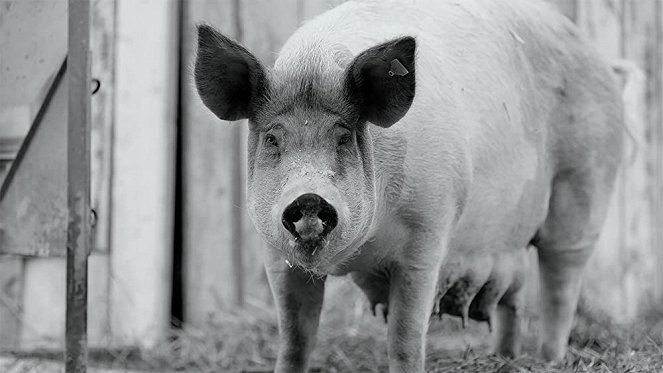Director:
Viktor KossakovskyStreaming (1)
Sinopsis(1)
Un vívido retrato de la vida de Gunda y sus cochinillos que nos devuelve a la pureza del cine de los orígenes. (Filmin)
Videos (4)
Reseñas (3)
Arte vegano con ínfulas sobre cómo incluso los animales industriales tienen personalidad y emociones (con ínfulas porque si amo a los animales y a la naturaleza no los filmaré en blanco y negro, ¡por el amor de Dios!) La mejor escena de la película es la subida cautelosa y exploratoria de las gallinas enjauladas a la hierba al aire libre, su percepción de los sonidos y la variedad del espacio abierto. Brillante momento psicológico. Las épicas tomas a cámara lenta de las vacas ponen de manifiesto su majestuosidad y, en los retratos, la individualidad de sus rostros. Pero en términos de contenido, su intervención en la película no tiene sentido. La parte menos interesante y a veces incluso aburrida es ver a Gonda y sus cerditos, pero culmina en el momento más fuerte de la película, expresando finalmente su idea. Con imágenes más breves de los cerdos y una «historia» de las vacas con más sentido le daría cuatro estrellas.
()
Gunda is very good at evoking all kinds of superlatives, such as in the official annotation and humorous slogans like “Babe in the style of Béla Tarr" and "behind the scenes of Wedding Trough”. This derives from its greatest virtue, but it has less to do with what the film is about than with its concept and treatment. In fact, in the context of modern cinema, it may seem like a revelation, as we are more likely to find parallels in the formats of YouTube and modern television. The ambient sound component gives the impression of ASMR videos and the action on the screen is reminiscent of slow TV, but with a more obvious dramaturgical and screenwriting element, which brings to the fore the themes of ecology, organic farms and, inevitably, the ambiguous relationship of civilisation and humanity to livestock farming and the ethics thereof. At the same time, however, it leaves a lot of room for viewers’ thoughts, which, like the animals on the screen, are given a relatively free range. Undisturbed by music, hectic editing and traditional milking of emotions or meanings, but concurrently stimulated by the moving and magnificently shot wallpaper on the screen, the mind begins to plant stories where there possibly aren’t any and to wander off in bizarre directions. The oft-mentioned screen is crucial in this, as it is only in the semi-darkness and with the relinquishing of control over the film provided to us by remote controls and keyboards that the desired calming of the senses can occur, enabling not only contemplation but also simply a relaxing release of the mind’s reins.
()
When people watch nature documentaries about, I don't know, polar bears, it’s boring but I get it because they probably don't get the opportunity to chase a polar bear in real life. But when I look at how domestic animals live in their climate zone, probably no more than 5 kilometers from the nearest living pig, I feel a little bit uptight. It's as if someone is reminding me that I should be vegan without necessarily having to get dirty and deadened by proximity to an actual pig pen. The endless piglet scenes reminded me of the moments when someone starts showing you pictures of their kids. Artistically, there's not much else, just a decent camera with huge resolution, adapting to the sympathetic fauna. Anyway, I commend the long dark ending and the decision to leave the film without music or any accompanying words.
()
Galería (16)
Foto © Sant & Usant



Anuncio